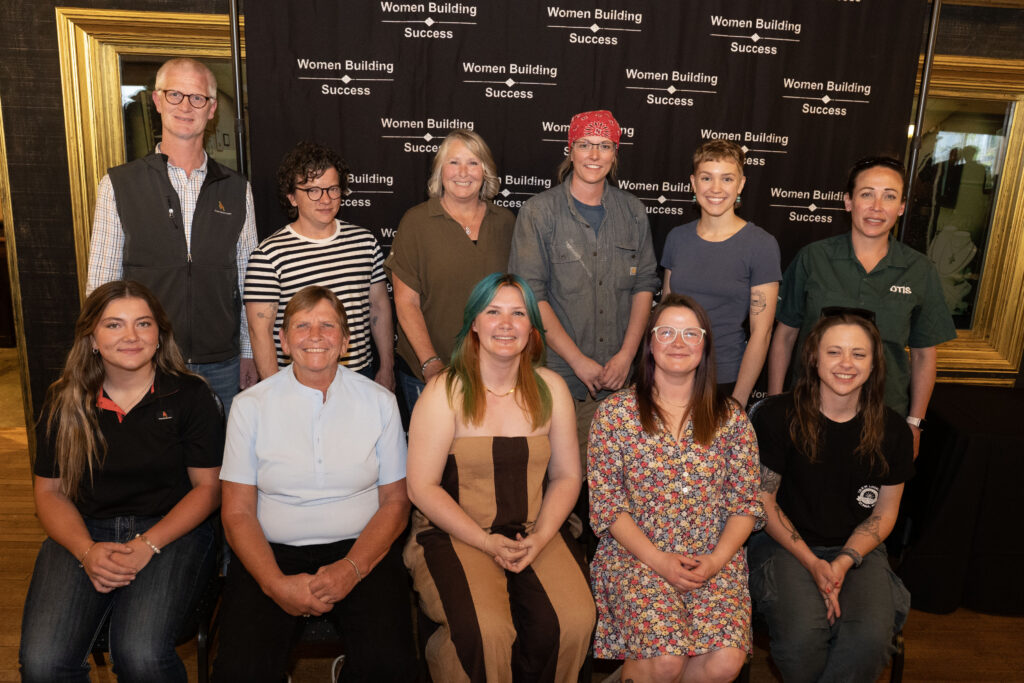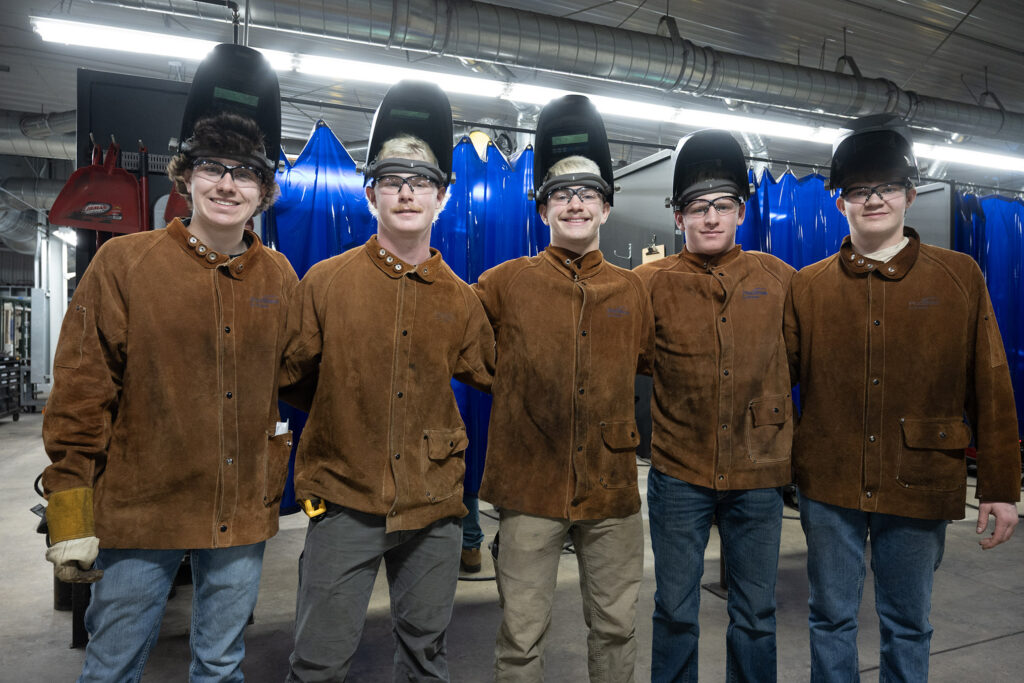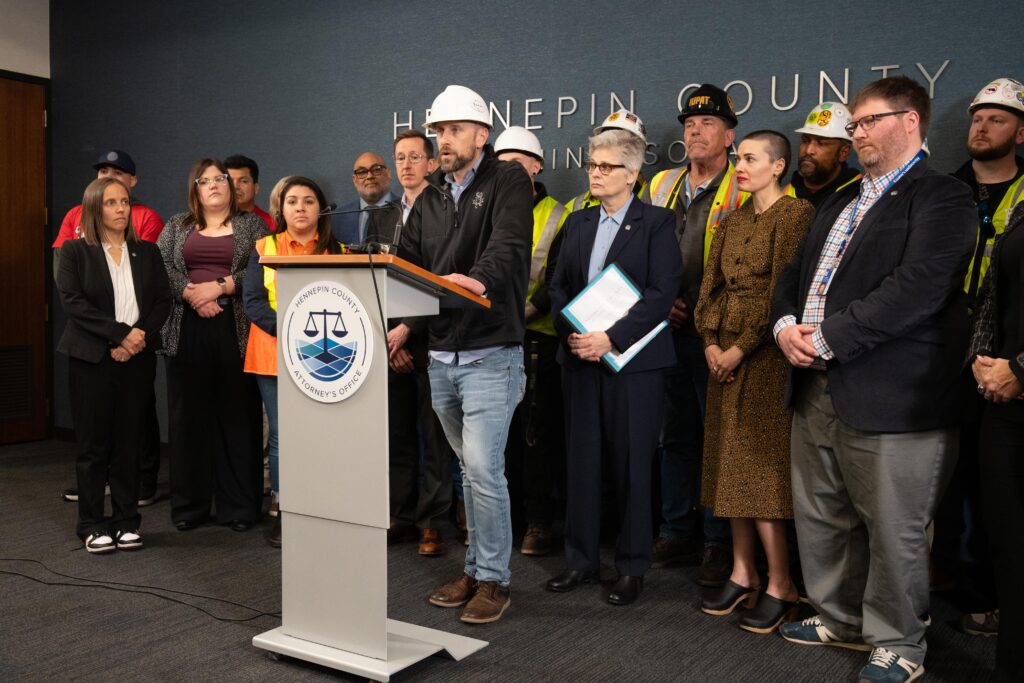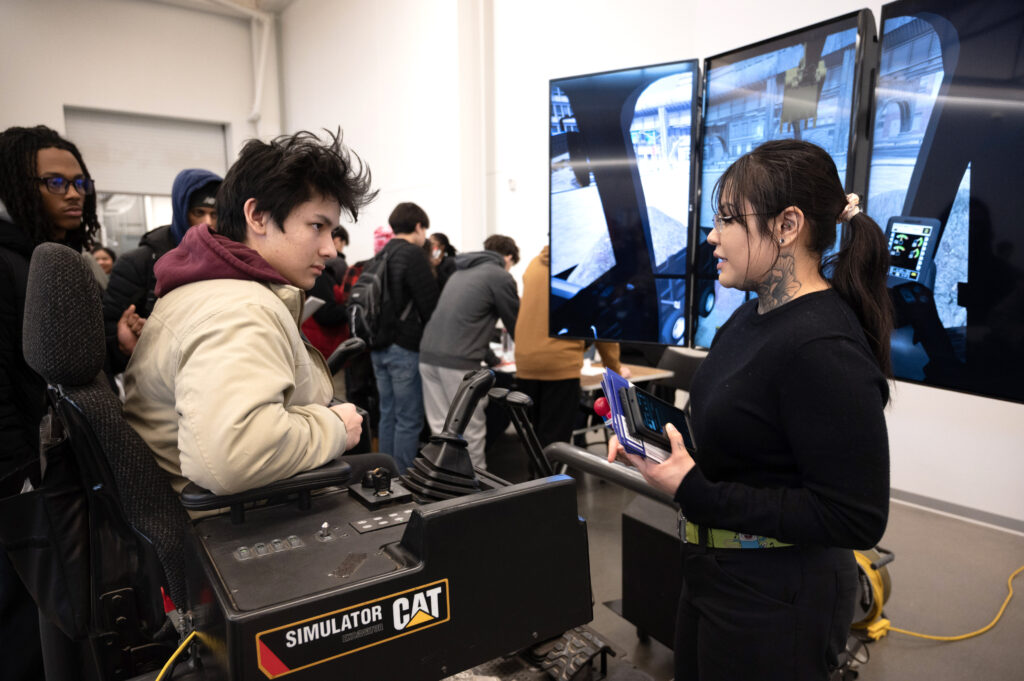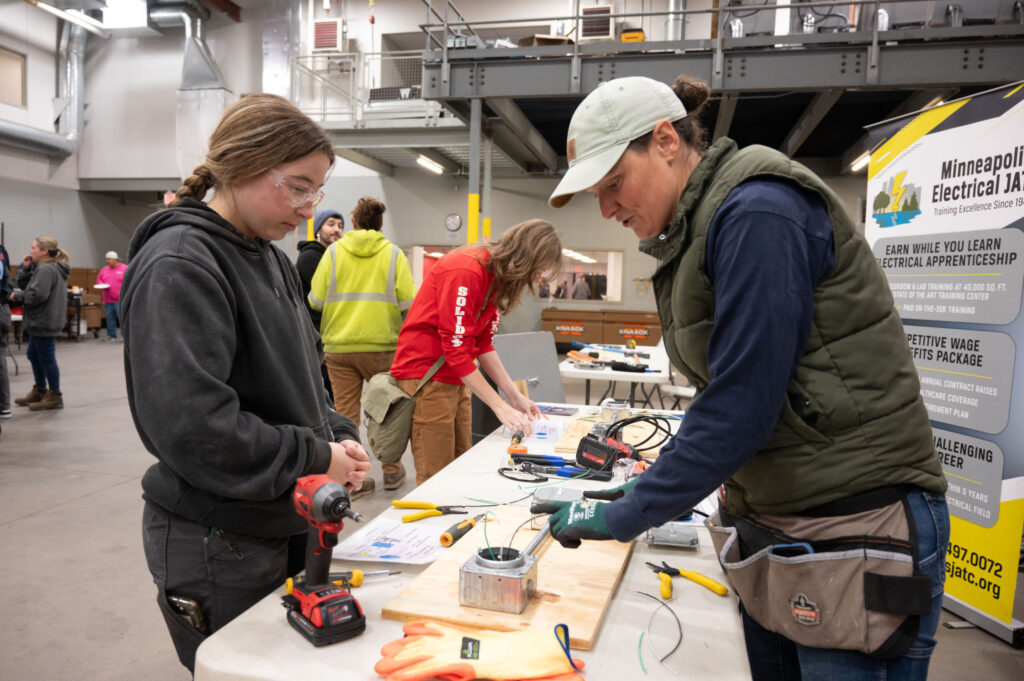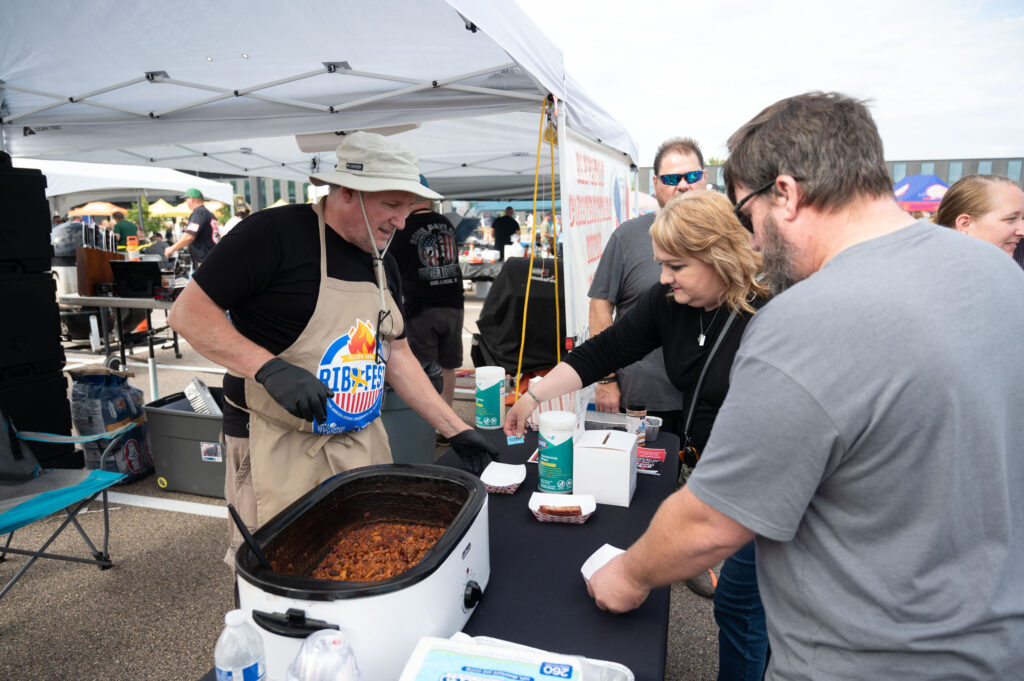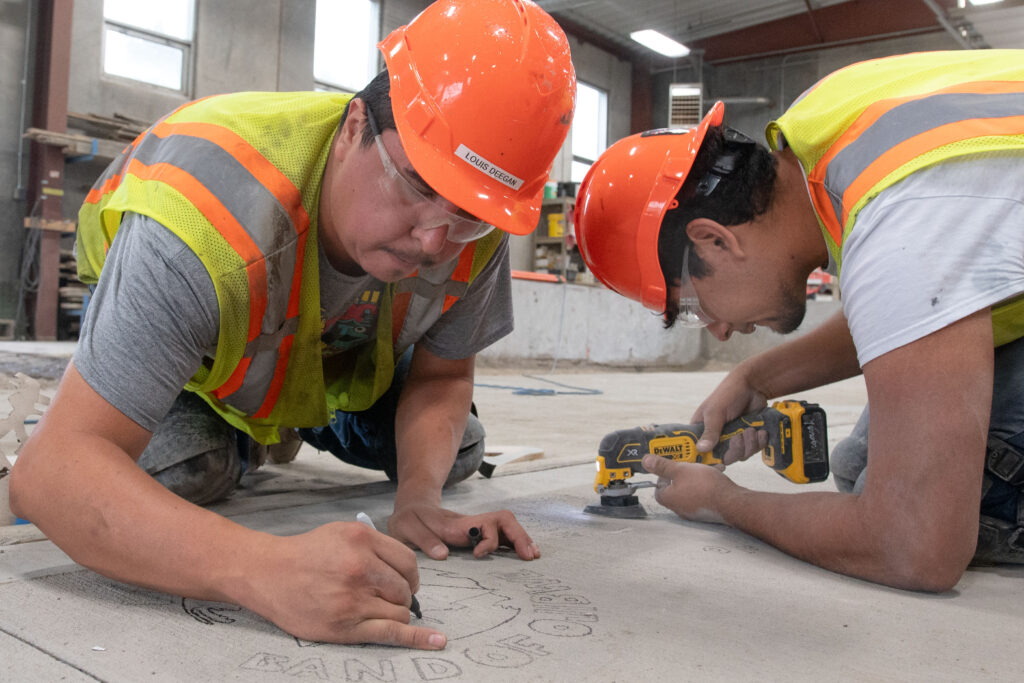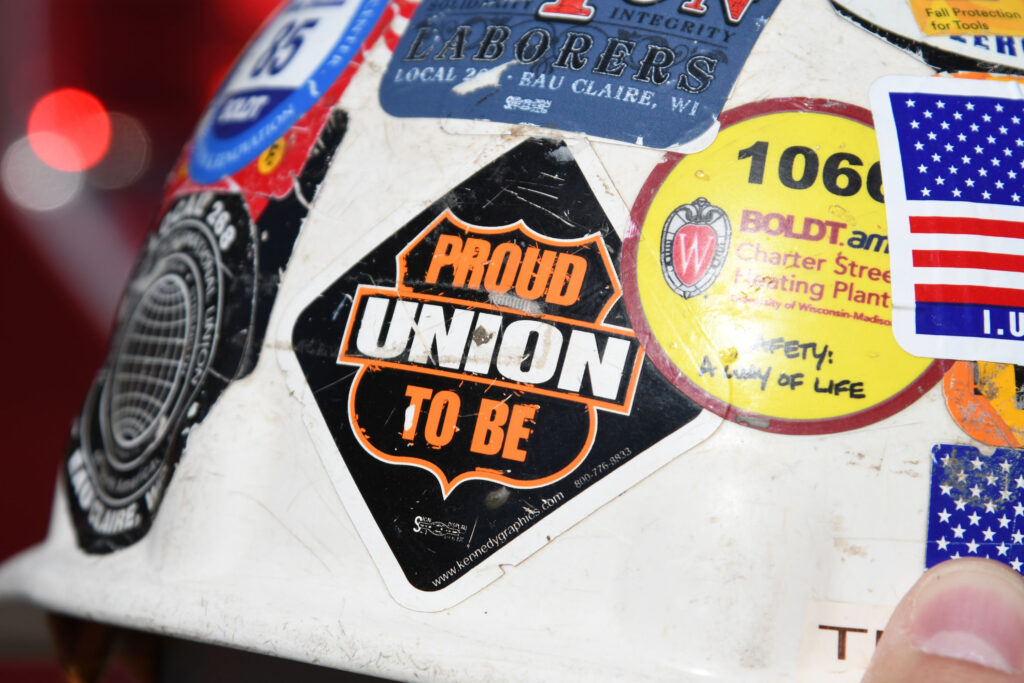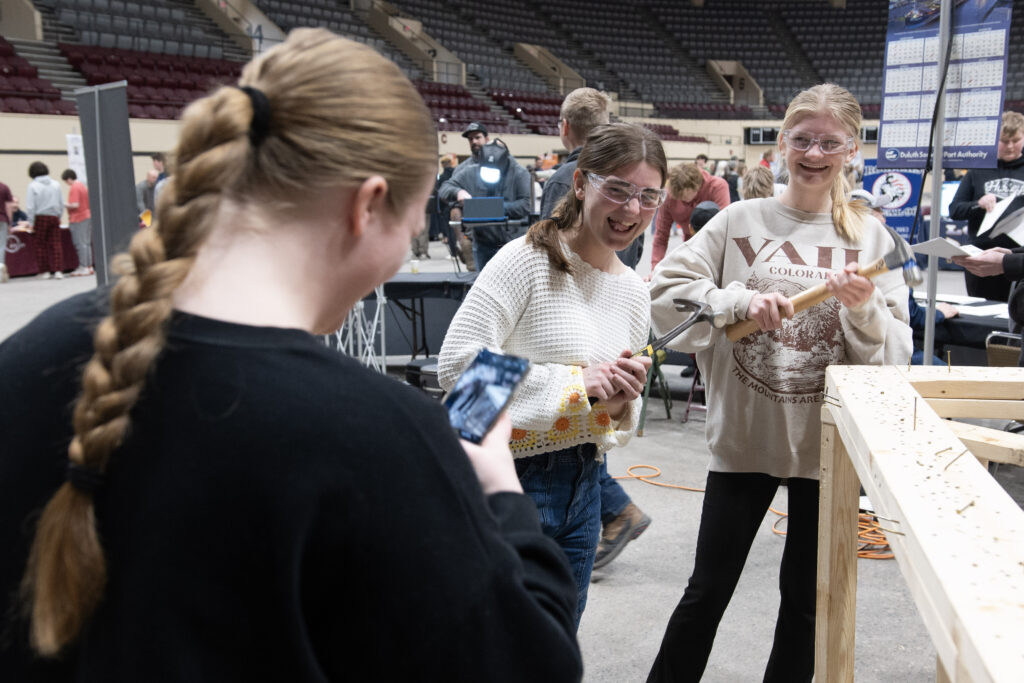Tradeswomen Honored
The year’s Women Building Success Awards program for 2025 had two “firsts”: No. 1. They had co-winners in the Tradeswomen in Leadership category. According to board member Jenny Winkelaar, this was a “highly-debated category.” Nothing in the recommendations could sway…
Rochester Welding Competition Grows by Challenging Students
Minnesota high school students participated in a welding competition held at Local 6 Pipefitters Training Center in Rochester. Several hundred more came to the facility to attend a career fair.
Hennepin County Obtains Minnesota’s First Ever Wage Theft Conviction
In early April a Hennepin County trial judge obtained the first criminal conviction for wage theft in Minnesota history. It represents a significant milestone for union trades labor in Minnesota.
Amid a Buzz for Apprenticeships, Minnesota Explores Accessibility
Looking to help fill skilled labor shortages, Minnesota could boost support through legislative action for Building Strong Communities, a program that opens its arms to disadvantaged populations.
Construct Tomorrow: Instructions to Opportunity
Construct Tomorrow’s student participation numbers continue to show high schoolers are interested in careers in the building trades.
National Apprenticeship Week 2024
In honor of the 10th anniversary of National Apprenticeship Week, Women Building Success sponsored the Trades Games Challenge held at the Local 455 Steamfitters Pipefitters Local 455 Training Center in St. Paul.
RibFest Continues Mission of the Trades Beyond the Yellow Ribbon Committee
More than 600 people feasted on 437 racks of ribs cooked at Minnesota Building Trades RibFest, an event that raises money for the Minnesota Building Trades Beyond the Yellow Ribbon Committee.
Cement Masons Camp: Inclusion Starts with Opportunity
Moke Eaglefeathers, Cement Masons Local 633 Apprenticeship Coordinator, runs a summer camp like no other – a ten week pre-apprenticeship program just for young people from Minnesota’s Native American reservations.
Gallup Labor Day Poll 2024: Organized Labor Still Highly Regarded
Labor union approval continues to ride a crest not seen in nearly 60 years according to the latest poll released by Gallup. Seven out of 10 Americans (70%) say they have a positive view of labor unions.
Building Strong Communities Graduation Rate Soars 41%
Participation in Building Strong Communities (BSC), the 12-week apprenticeship preparatory program, accelerated in double digits yet again up a whopping 41% from last year.
Water’s Off Turns Plumbers on to Helping Others
On March 23, union plumbers from Local 34 in St. Paul, Local 15 in Minneapolis and Local 6 in Rochester took a Saturday off to volunteer their skills to help homeowners in need of their services. It was part of the 30th anniversary of Water’s Off.
Construct Tomorrow Finishes Strong, Plans for Next Year
Nine different locations hosted Construct Tomorrow events this school year. With one event remaining, Construct Tomorrow already looks to build upon a strong year.
